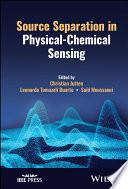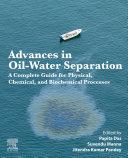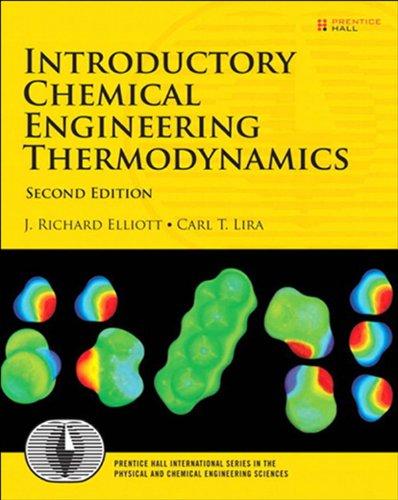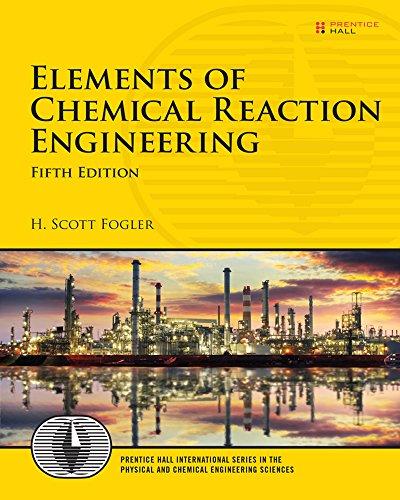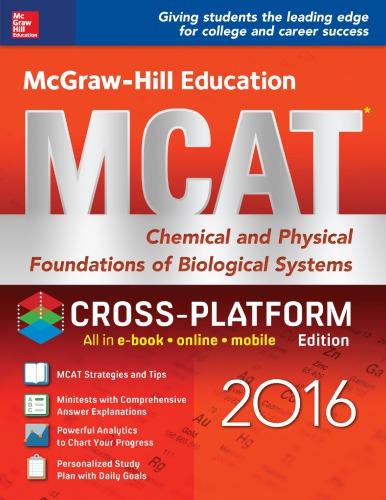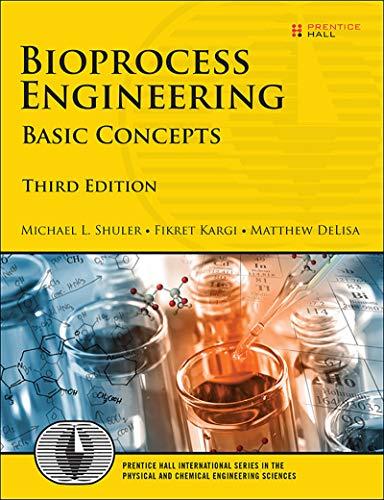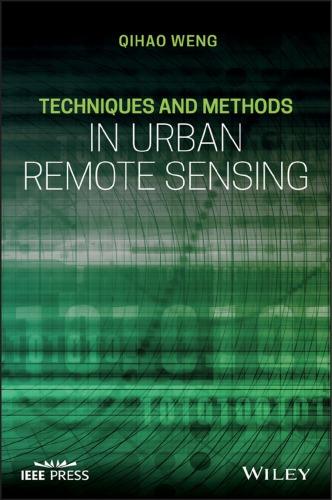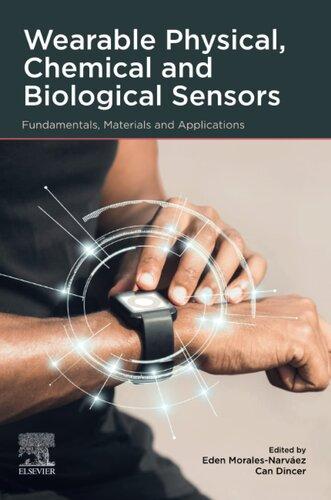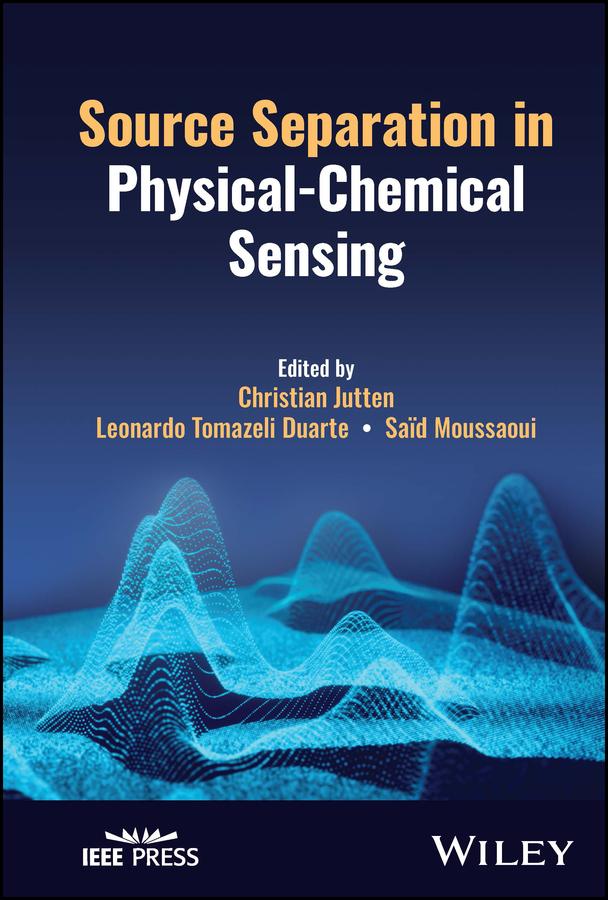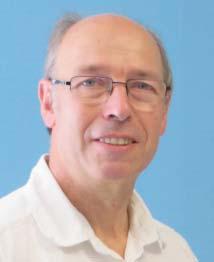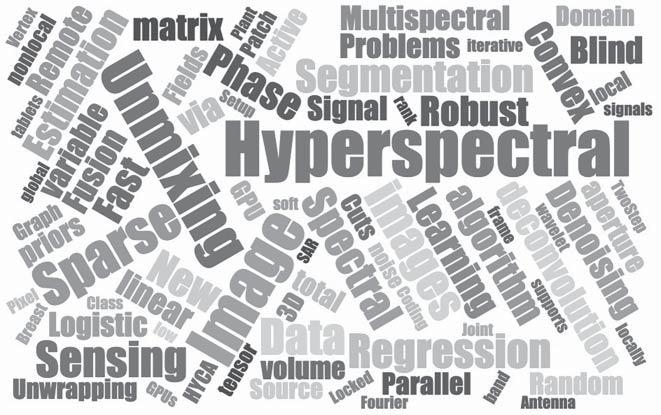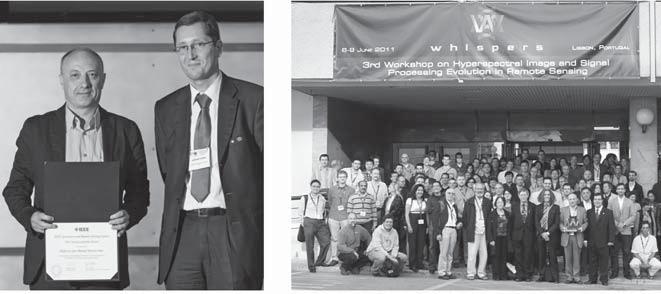SourceSeparationinPhysical-Chemical Sensing
Editedby ChristianJutten
UniversitéGrenobleAlpes,Grenoble-INP,CNRS,GIPSA-lab France
LeonardoTomazeliDuarte UniversityofCampinas Limeira,Brazil
SaïdMoussaoui
NantesUniversité,EcoleCentraleNantes,CNRS,LS2N Nantes,France
Thiseditionfirstpublished2024.
©2024JohnWiley&SonsLtd
Allrightsreserved.Nopartofthispublicationmaybereproduced,storedinaretrieval system,ortransmitted,inanyformorbyanymeans,electronic,mechanical, photocopying,recordingorotherwise,exceptaspermittedbylaw.Adviceonhowto obtainpermissiontoreusematerialfromthistitleisavailableathttp://www.wiley.com/ go/permissions.
TherightofChristianJutten,LeonardoTomazeliDuarte,andSaïdMoussaouitobe identifiedastheauthorsoftheeditorialmaterialinthisworkhasbeenassertedin accordancewithlaw.
RegisteredOffices
JohnWiley&Sons,Inc.,111RiverStreet,Hoboken,NJ07030,USA
JohnWiley&SonsLtd,TheAtrium,SouthernGate,Chichester,WestSussex,PO19 8SQ,UK
Fordetailsofourglobaleditorialoffices,customerservices,andmoreinformationabout Wileyproductsvisitusatwww.wiley.com.
Wileyalsopublishesitsbooksinavarietyofelectronicformatsandbyprint-on-demand. Somecontentthatappearsinstandardprintversionsofthisbookmaynotbeavailablein otherformats.
Trademarks:WileyandtheWileylogoaretrademarksorregisteredtrademarksofJohn Wiley&Sons,Inc.and/oritsaffiliatesintheUnitedStatesandothercountriesandmay notbeusedwithoutwrittenpermission.Allothertrademarksarethepropertyoftheir respectiveowners.JohnWiley&Sons,Inc.isnotassociatedwithanyproductorvendor mentionedinthisbook.
LimitofLiability/DisclaimerofWarranty
Inviewofongoingresearch,equipmentmodifications,changesingovernmental regulations,andtheconstantflowofinformationrelatingtotheuseofexperimental reagents,equipment,anddevices,thereaderisurgedtoreviewandevaluatethe informationprovidedinthepackageinsertorinstructionsforeachchemical,pieceof equipment,reagent,ordevicefor,amongotherthings,anychangesintheinstructionsor indicationofusageandforaddedwarningsandprecautions.Whilethepublisherand authorshaveusedtheirbesteffortsinpreparingthiswork,theymakenorepresentations orwarrantieswithrespecttotheaccuracyorcompletenessofthecontentsofthiswork andspecificallydisclaimallwarranties,includingwithoutlimitationanyimplied warrantiesofmerchantabilityorfitnessforaparticularpurpose.Nowarrantymaybe createdorextendedbysalesrepresentatives,writtensalesmaterialsorpromotional statementsforthiswork.Thefactthatanorganization,website,orproductisreferredto inthisworkasacitationand/orpotentialsourceoffurtherinformationdoesnotmean thatthepublisherandauthorsendorsetheinformationorservicestheorganization, website,orproductmayprovideorrecommendationsitmaymake.Thisworkissold withtheunderstandingthatthepublisherisnotengagedinrenderingprofessional services.Theadviceandstrategiescontainedhereinmaynotbesuitableforyour situation.Youshouldconsultwithaspecialistwhereappropriate.Further,readers shouldbeawarethatwebsiteslistedinthisworkmayhavechangedordisappeared betweenwhenthisworkwaswrittenandwhenitisread.Neitherthepublishernor authorsshallbeliableforanylossofprofitoranyothercommercialdamages,including butnotlimitedtospecial,incidental,consequential,orotherdamages.
LibraryofCongressCataloging-in-PublicationDataappliedfor:
HardbackISBN:9781119137221
CoverDesign:Wiley
CoverImage:©MR.Cole_Photographer/GettyImages
Contents
AbouttheEditors xiii
ListofContributors xv
Foreword xvii
Preface xxi
Notation xxiii
1OverviewofSourceSeparation 1 ChristianJutten,LeonardoTomazeliDuarte,andSaïdMoussaoui
1.1Introduction 1
1.1.1BriefIntroductiontoSourceSeparation 1
1.1.2Chapter’sOrganization 3
1.2TheProblemofSourceSeparation 3
1.2.1MathematicalDescription 3
1.2.2DifferentTypesofMixingModels 5
1.2.2.1LinearMixtures 5
1.2.2.2NonlinearMixtures 6
1.2.2.3Overdetermined,Determined,orUnderdeterminedModels 7
1.2.2.4NoisyMixtures 8
1.2.3FromSourceSeparationtoMatrixFactorization 8
1.2.3.1FactorizationAmbiguity 9
1.2.3.2DataRepresentation 10
1.2.3.3FactorizationAlgorithms 10
1.2.4EnhancedDiversity:TensorFormulationandFactorization 11
1.2.5FromSupervisedtoBlindSolutions 14
1.3StatisticalMethodsforSourceSeparation 15
1.3.1FactorizationofIndependentSources 16
1.3.2IndependentComponentAnalysis(ICA) 18
1.3.2.1ICAbyMutualInformationMinimization 18
1.3.2.2ICAbyMaximumLikelihoodEstimation 19
1.3.2.3ICAbyKurtosisMaximization 21
1.3.3MethodsBasedonSecond-OrderStatistics 22
1.4SourceSeparationProblemsinPhysical–ChemicalSensing 24
1.4.1MaterialAnalysisbySpectroscopy 24
1.4.2HyperspectralImaging 26
1.4.3ElectrochemicalSensorArrays 28
1.5SourceSeparationMethodsforChemical–PhysicalSensing 30
1.5.1Self-ModelingCurveResolution 31
1.5.2Non-NegativeMatrixFactorization 31
1.5.3BayesianSeparationApproach 33
1.5.4GeometricalApproaches 34
1.5.5TensorFactorizationMethods 35
1.6OrganizationoftheBook 35 References 36
2Optimization 43
EmilieChouzenouxandJean-ChristophePesquet
2.1IntroductiontoOptimizationProblems 43
2.1.1ProblemFormulation 43
2.1.2TheoreticalBackground 44
2.1.2.1ConvexFunctions 44
2.1.2.2DifferentiabilityandSubdifferentiability 46
2.1.3ExamplesintheContextofSourceSeparation 46
2.1.3.1Non-negativeMatrixFactorization 46
2.1.3.2IndependentComponentAnalysis 47
2.1.3.3TensorDecomposition 48
2.1.4ChapterOutline 49
2.2Majorization–MinimizationApproaches 50
2.2.1Majorization–MinimizationPrinciple 50
2.2.2MajorizationTechniques 51
2.2.3QuadraticMMMethods 57
2.2.3.1QuadraticMMAlgorithm 57
2.2.3.2Half-QuadraticMMAlgorithms 60
2.2.3.3SubspaceAccelerationStrategy 61
2.2.4VariableMetricForward–BackwardAlgorithm 63
2.2.5Block-CoordinateMMAlgorithms 66
2.2.5.1GeneralPrinciple 66
2.2.5.2Block-CoordinateQuadraticMMAlgorithm 68
2.2.5.3Block-CoordinateVMFBAlgorithm 70
2.3Primal-DualMethods 72
2.3.1LagrangeDuality 72
2.3.2AlternatingDirectionMethodofMultipliers 73
2.3.2.1BasicForm 73
2.3.2.2MinimizingaSumofMoreThanTwoFunctions 74
2.3.3Primal-DualProximalAlgorithms 75
2.3.4Primal-DualInteriorPointAlgorithm 76
2.3.4.1Primal-DualDirections 79
2.3.4.2Linesearch 80
2.3.4.3PenalizationParameterUpdate 81
2.3.4.4ResultingAlgorithm 81
2.4ApplicationtoNMRSignalRestoration 83
2.4.1QuadraticPenalization 85
2.4.2EntropicPenalization 86
2.4.3SparsityPriorintheSignalDomain 87
2.4.4SparsityPriorinaTransformedDomain 88
2.4.5SparsityPriorandRangeConstraints 89
2.4.6ConcludingRemarks 90
2.5Conclusion 91 References 92
3Non-negativeMatrixFactorization 103 DavidBrie,NicolasGillis,andSaïdMoussaoui
3.1Introduction 103
3.1.1BriefHistoricalOverview 104
3.2GeometricalInterpretationofNMFandtheNon-negative Rank 105
3.2.1Non-negativeRankFormulation 105
3.2.2ConvexConeFormulation 105
3.2.3NestedPolytopeFormulation 107
3.2.4Non-negativeRankComputation 108
3.2.5IllustrativeExamples 110
3.3UniquenessandAdmissibleSolutionsofNMF 112
3.3.1UniquenessConditions 113
3.3.2FindingtheAdmissibleSolutions 114
3.3.2.1IllustrationintheCaseofTwoSources 115
3.3.2.2IllustrationintheCaseofMoreThanTwoSources 115
3.4Non-negativeMatrixFactorizationAlgorithms 118
3.4.1StatisticalFormulationofOptimizationCriteria 118
3.4.1.1CaseofaGaussianNoise 118
3.4.1.2CaseofPoissonianDistribution 118
3.4.2IterativeFactorizationMethods 120
3.4.2.1InitializingNMFAlgorithms 121
3.4.2.2AlternatingNon-negativeLeastSquares,AnExactCoordinate DescentMethodwith2BlocksofVariables 122
3.4.2.3MultiplicativeUpdates 123
3.4.2.4AlternatingLeastSquares 124
3.4.2.5ExactCoordinateDescentMethodwith2R Blocksof Variables 124
3.4.3ConstrainedandPenalizedFactorizationMethods 126
3.4.4GeometricalApproachesandSeparability 128
3.5ApplicationsofNMFinChemicalSensing.TwoExamplesof ReducingAdmissibleSolutions 129
3.5.1PolarizedRamanSpectroscopy:ADataAugmentation Approach 130
3.5.1.1RamanDataDescription 130
3.5.1.2RamanDataProcessing 132
3.5.2UnmixingBlurredRamanSpectroscopyImages 135
3.5.2.1BlurringEffectModeling 136
3.5.2.2ApplicationtoRamanSpectroscopyImages 138
3.6Conclusions 141 References 141
4BayesianSourceSeparation 151 SaïdMoussaoui,LeonardoTomazeliDuarte,NicolasDobigeon,and ChristianJutten
4.1Introduction 151
4.2OverviewofBayesianSourceSeparation 152
4.2.1GeneralFramework 152
4.2.2ChoiceofthePriorDistributions 153
4.2.3SourceSignalandMixingMatrixEstimationfromthePosterior Distribution 155
4.2.3.1JointMaximumAPosteriori(JMAP) 155
4.2.3.2MarginalMaximum APosteriori (MMAP) 156
4.2.3.3PosteriorMean(PM)orMinimumMeanSquareError (MMSE) 157
4.2.4HierarchicalBayesianModelingandInference 158
4.3StatisticalModelsfortheSeparationintheLinearMixing 159
4.3.1MixingModel 159
4.3.2LikelihoodFunctionsintheLinearMixingCase 160
4.3.2.1GaussianNoise 160
4.3.2.2PoissonianNoise 161
4.3.3PriorsontheSourceSignalsandMixingCoefficientsin ChemicalSensing 162
4.3.3.1Non-negativityConstraint 162
4.3.3.2BoundConstraints 164
4.3.3.3Sum-to-OneConstraint 164
4.3.3.4SmoothnessConstraint 166
4.3.4ApplicationtotheSeparationofSyntheticSpectral Mixtures 166
4.3.4.1BayesianSeparationModel 168
4.3.4.2BayesianSeparationAlgorithm 170
4.3.4.3BayesianSeparationResults 170
4.4StatisticalModelsandSeparationAlgorithmsforNonlinear Mixtures 173
4.4.1NonlinearMixingModelsfromPhysical–ChemicalSensing Theory 173
4.4.1.1FirstExample.InterferenceinPotentiometricSensors 174
4.4.1.2SecondExample.IntimateMixturesinHyperspectral Imaging 175
4.4.2EmpiricalNonlinearMixingModelsUsedinSeparation Algorithms 175
4.4.2.1Post-NonlinearMixingModels 176
4.4.2.2PolynomialMixingModels 176
4.4.2.3Linear–QuadraticMixingModels 176
4.4.2.4BilinearMixingModels 177
4.5SomePracticalIssuesonAlgorithmImplementation 177
4.5.1ASimpleExample 178
4.5.1.1TheResultingGibbsSampler 180
4.6ApplicationstoCaseStudiesinChemicalSensing 182
4.6.1MonitoringofCalciumCarbonateCrystallizationUsing RamanSpectroscopy 182
4.6.1.1MixturePreparationandDataAcquisition 182
4.6.1.2MixtureAnalysisbyBayesianSourceSeparation 183
4.6.2DealingwithInterferenceIssuesinIon-SelectiveElectrode Arrays 186
4.7Conclusion 191
Appendix4.AImplementationofFunctionpostsourcesrnd viaMetropolis-HastingAlgorithm 191 References 193
x Contents
5GeometricalMethods–Illustrationwith HyperspectralUnmixing 201 JoséM.Bioucas-DiasandWing-KinMa
5.1Introduction 201
5.2HyperspectralSensing 202
5.2.1HyperspectralImaging 202
5.2.2HyperspectralUnmixing 204
5.3HyperspectralMixingModels 206
5.4LinearHUProblemFormulation 208
5.4.1Preprocessing 210
5.4.1.1DimensionReduction(DR) 210
5.4.2SignalSubspaceIdentification 211
5.4.2.1AffineSetEstimationandProjection 213
5.4.3ClassesofLinearHUProblems 216
5.4.3.1DatasetswithPurePixels.PurePixelPursuit 216
5.4.3.2DatasetsWithoutPurePixels.MinimumVolumeSimplex Estimation 217
5.4.3.3HighlyMixedDatasets.StatisticalInference 218
5.4.3.4HyperspectralUnmixingThroughSparseRegression(SR) 219
5.4.3.5SynopsisoftheLinearHUProblems 220
5.5Dictionary-BasedSemiblindHU 222
5.5.1SparseRegression 222
5.5.2SensorArrayProcessingMeetsSemiblindHU 226
5.5.3FurtherDiscussion 227
5.6MinimumVolumeSimplexEstimation 227
5.6.1VolMinOptimization 230
5.6.2Non-NegativeMatrixFactorization 233
5.6.3IllustrativeComparisonofGeometricalMethods 238
5.7Applications 239
5.7.1UnmixingExampleUnderthePurePixelAssumption 239
5.7.2UnmixingviaSparseRegression 240
5.7.3Near-InfraredHyperspectralUnmixingofPharmaceutical Tablets 242
5.8Conclusions 244 References 245
6TensorDecompositions:PrinciplesandApplicationto FoodSciences 255 JérémyCohen,RasmusBro,andPierreComon
6.1Introduction 255
6.1.1ASimplifiedDefinition 255
6.1.2Separability:AKeyConceptforTensorDecomposition Model 257
6.1.3TheFluorescenceExcitationEmissionMatrix(FEEM) 258
6.1.4StructureoftheChapter 260
6.1.4.1Note 261
6.1.4.2OtherIntroductions 261
6.2TensorDecompositions 261
6.2.1Tensor-BasedMethod,theMatrixCase 261
6.2.2CanonicalPolyadicDecomposition,PARAFAC/ CanDecomp 263
6.2.3ManipulationofTensors 266
6.2.3.1Vectorization 266
6.2.3.2Matricization 268
6.2.3.3ContractionsandCPD 269
6.2.4TheChainRule 269
6.2.5MultilinearSingularValueDecomposition 270
6.2.6Tucker 271
6.2.7PARAFAC2 272
6.2.8ApproximateDecomposition 272
6.3ConstraintsinDecompositions 273
6.3.1Non-negativity 274
6.3.1.1Non-negativeCPD 274
6.3.1.2Non-negativeTuckerDecomposition 276
6.3.2BlockDecompositions 276
6.3.3StructuredFactors 277
6.3.3.1Re-parameterization 277
6.3.3.2DictionaryConstraints 278
6.4CoupledDecompositions 279
6.4.1ExactCoupledDecomposition,AFirstApproach 280
6.4.2AGeneralFrameworkforDataFusioninTensor Decompositions 281
6.4.2.1H1:ConditionalIndependenceoftheData 282
6.4.3ExamplesofCoupledDecompositionModels 284
6.4.3.1AdvancedCoupledMatrixTensorFactorization 284
6.4.3.2ShiftPARAFACandOthers 285
6.4.3.3GSVD 286
6.5Algorithms 286
6.5.1UnconstrainedTensorDecomposition 288
6.5.1.1IterativeAlgorithmsforApproximateCPD 288
6.5.1.2DeflationandN-PLS 291
6.5.1.3ExactDecompositionMethods 293
6.5.2ConstrainedTensorDecomposition 293
6.5.2.1ConstrainedLeastSquares 293
6.5.2.2ProjectedGradientandAll-at-OnceProximalMethods 294
6.5.2.3ParametricApproaches 294
6.5.3HandlingLargeDataSets 294
6.5.3.1MultilinearSVDCompression 295
6.6Applications 297
6.6.1Preprocessing 297
6.6.2Fluorescence 298
6.6.3Chromatography 301
6.6.4OtherApplications 304 References 307
Index 325
AbouttheEditors
ChristianJutten receivedPhD(1981)andDoctor èsSciences(1987)degreesfromGrenobleInstituteofTechnology,France.HewasAssociate Professor(1982–1989),Professor(1989–2019) atUniversityGrenobleAlpes,whereheis nowEmeritusProfessorsinceSeptember 2019.Since1980s,hisresearchinterestsare inmachinelearningandsourceseparation, includingtheoryandapplications(biomedical engineering,hyperspectralimaging,chemical sensing,speech).Heisauthor/co-authorof fourbooks,125+ papersininternationaljournals,and250+ publicationsin internationalconferences.
JuttenwasavisitingprofessoratEPFL,RIKENlabs,andUniversityof Campinas.Heservedasdirectorordeputydirectorofthesignal/image processinglaboratoryinGrenoble(1993to2010),asscientificadvisorfor signal/imageprocessingattheFrenchMinistryofResearch(1996–1998), andatCNRS(2003–2006and2012–2019).
Juttenwasorganizerorprogramchairofmanyinternationalconferences, includingthefirstIndependentComponentAnalysisconferencein1999 (ICA’99)andIEEEMLSP2009.Hewasthetechnicalprogramco-chairof ICASSP2020.HewasamemberoftheIEEEMLSPandSPTMTechnical Committees.Hewasassociateeditorfor SignalProcessingandIEEETrans. onCircuitsandSystems,andguestco-editorfor IEEESignalProcessing Magazine (2014)andthe ProceedingsoftheIEEE (2015).From2021to2023, hewaseditor-in-chiefof IEEESignalProcessingMagazine.
Juttenreceivedmanyawards,e.g.bestpaperawardsofEURASIP(1992) andIEEEGRSS(2012),MedalBlondel(1997)fromtheFrenchElectrical Engineeringsociety,andoneGrandPrixoftheFrenchAcadémiedes Sciences(2016).HewaselevatedasIEEEfellow(2008),EURASIPfellow (2013),andasaSeniorMemberofInstitutUniversitairedeFrancefor
10yearssince2008.Hewastherecipientofa2012ERCAdvancedGrantfor theprojectChallengesinExtractionandSeparationofSources(CHESS).

LeonardoTomazeliDuarte receivedtheBSand MScdegreesinelectricalengineeringfromthe UniversityofCampinas(UNICAMP),Brazil, in2004and2006,respectively,andthePhD degreefromtheGrenobleInstituteofTechnology(GrenobleINP,UniversitéGrenoble Alpes),France,in2009.Since2011,hehas beenwiththeSchoolofAppliedSciences (FCA)atUNICAMP,Limeira,Brazil,where heiscurrentlyanassociateprofessor.Heis aSeniorMemberoftheIEEE.In2016,he wasaVisitingProfessorattheÉcoledeGénie Industriel(GI-GrenobleINP,France).Since2015,hehasbeenrecipientof theNationalCouncilforScientificandTechnologicalDevelopment(CNPq, Brazil)productivityresearchgrant.Since2023,heisoneoftheprincipal investigatorswithintheBrazilianInstituteofDataScience(BI0S),oneof theBrazilianAppliedResearchCentersonArtificialIntelligence.In2017, hewastherecipientofUNICAMP“ZeferinoVaz”AcademicRecognition Award(forresearchandteachingperformanceatUNICAMP).In2022,he waselectedAffiliatedMember(upto40yearsold)oftheBrazilianAcademy ofSciences(ABC).Hisresearchinterestscenteraroundthebroadareaof datascienceandlieprimarilyinthefieldsofsignalprocessing,decisionaidingandmachinelearning,andalsointheinterplaysbetweenthesefields.

SaïdMoussaoui receivedtheMEngdegreein electricalengineeringfromEcoleNationale Polytechnique,Algiers,Algeria,in2001;the MScdegreeinControl,SignalsandCommunicationfromtheUniversityHenriPoincaré, Nancy,France,in2004;andthePhDdegree inSignalandImageProcessingfromUniversitéHenriPoincaré,Nancy,France,in2005. Since2006,hehasbeenwiththeDepartment ofAutomaticsandRoboticsatEcoleCentrale NanteswhereheiscurrentlyafullProfessor. HeisamemberofthegroupofSignals,Images andSounds(SIMS)oftheLaboratoryofDigitalSciencesofNantes(LS2N, CNRSUMR6004).Hisresearchinterestsarerelatedtothefieldofsignal andimageprocessing,includingmethodologicalaspectsofstatisticalinference,numericaloptimization,andtheapplicationinvariousreal-lifecontextssuchaschemicaldataanalysis,remotesensing,andbiologicalimaging.
ListofContributors
JoséM.Bioucas-Dias InstitutodeTelecomunicacoes InstitutoSuperiorTécnico Lisboa Portugal
DavidBrie CRAN
LorraineUniversity Nancy France
RasmusBro DepartmentofFoodScience UniversityofCopenhagen Frederiksberg Denmark
EmilieChouzenoux OPIS,InriaSaclay UniversityParis-Saclay Gif-sur-Yvette
France
JérémyCohen CNRS,CREATIS
Lyon France
PierreComon CNRS GIPSA-lab UniversitéGrenobleAlpes
France
NicolasDobigeon IRIT INP-ENSEEIHT IRITUniversityofToulouse Toulouse France
LeonardoTomazeliDuarte SchoolofAppliedSciences(FCA) UniversityofCampinas Limeira Brazil
NicolasGillis DepartmentofMathematicsand OperationalResearch UniversityofMons
Mons Belgium
xvi ListofContributors
ChristianJutten
GIPSA-lab
Univ.GrenobleAlpes
CNRS,InstitutUniv.
deFrance
Grenoble France
Wing-KinMa DepartmentofElectronic Engineering
TheChineseUniversityof HongKong
HongKongSAR China
SaïdMoussaoui
LS2N,NantesUniversité EcoleCentraleNantes Nantes
France
Jean-ChristophePesquet CVN,CentraleSupélec UniversityParisSaclay
France
Foreword
InMemoriam:JoséM.Bioucas-Dias(1960–2020), aHumbleGiant
JoséManuelBioucas-Dias(1960–2020)wasaProfessoratInstitutoSuperior Técnico(IST),theengineeringschooloftheUniversityofLisbon,anda seniorresearcheratInstitutodeTelecomunicações.Afterobtaininghis PhDdegreeinElectricalandComputerEngineering,in1995,fromIST,he dedicatedhisresearchlifetotheareaofsignalandimageprocessing,in problemsrelatedtothereconstruction,restoration,andanalysisofimages. Inparticular,hefocuseddeeplyonprocessingandanalysisofremote sensingobservations,asubjectinwhichhewaswidelyconsidereda world-leadingauthority.JoséBioucas-Diascontributedtohighlyrelevant andinfluentialscientificandtechnicaladvancesinsyntheticaperture radar,interferometricradar,andhyperspectralimaging.
Figure1featuresawordcloudconstructedfromthetitlesofhisnumerous publicationsavailablefromIEEEXplore.Clearly,“hyperspectral”appears asacentraltopicofinterestandhewasindeedakeymemberofthehyperspectralimagingresearchcommunity,beitfromthegeoscienceandremote sensingpointofvieworfromthesignalandimageprocessingpointofview. Thedirectandindirectimplicationsandapplicationsofhiscontributionsare numerous,namelyintheprocessingandanalysisofsatelliteimages,whose impactonmodernsocietyisenormous.
Forhiscontributionstoimageprocessingandanalysisinremotesensing, JoséBioucas-DiaswaselevatedtoFellowoftheIEEE(InstituteofElectrical andElectronicsEngineers)in2016.In2017,hereceivedthefirst David LandgrebeAward,(Figure2a)fromtheGeoscienceandRemoteSensing Society(GRSS)oftheIEEE,withthecitation“foroutstandingcontributions inthefieldofremotesensingimageanalysis.”AccordingtotheGRSS, “theDavidLandgrebeawardisacareeraward,givenforextraordinary
xviii ForewordInMemoriam:JoséM.Bioucas-Dias(1960–2020),aHumbleGiant
Figure1 WordcloudbasedonthetitlesofallpublicationsofJoséBioucas-Dias, extractedfromIEEEXplore.
Figure2 (a)JoséBioucas-DiasreceivingtheDavidLandgrebeAward.(b)José Bioucas-Dias,generalchairofthe3rdWorkshoponHyperspectralImageand SignalProcessing,heldin2011inLisbon,Portugal. contributionsinthefieldofremoteobservationimageanalysis.”In2018he wasnamedDistinguishedLecturerbytheIEEEGRSS.
Throughouthiscareer,JoséBioucas-Diaspublishedmorethan100articles inthemostprestigiousjournalsinhisareasofwork,aswellasmorethan
ForewordInMemoriam:JoséM.Bioucas-Dias(1960–2020),aHumbleGiant xix
200articlesinallthebestsignalandimageprocessingandremotesensing conferences,wherehereceivedseveral“bestpaperawards.”Thehighinternationalimpactofhisworkisevidentintheimportantdistinctionsmentionedinthepreviousparagraph,aswellasinthefactthathewasincluded inthe2015,2019,2020,and2021editionsoftheprestigious“HighlyCited Researchers”list(byClarivateAnalytics),whichisreservedtotheworld eliteofresearcherswiththegreatestimpactintheirfields.
Hisrecognitionandprestigeintheinternationalscientificcommunityarealsoevidentinthefactthathewasinvitedtojointheeditorial boardsofthebestjournalsinthearea:the IEEETransactionsonCircuits andSystems,the IEEETransactionsonImageProcessing (inwhichhewas asenioreditor),andthe IEEETransactionsonGeoscienceandRemote Sensing.Hewasalsoaguesteditorforseveralspecialissuesintheseand otherjournals.HewastheGeneralCo-ChairofthethirdIEEEGRSS WorkshoponHyperspectralImageandSignalProcessing,Evolutionin Remotesensing((WHISPERS’2011,(Figure2b))andhasbeenamemberof program/technicalcommitteesofseveralinternationalconferences.Even morerevealingofhisrecognitionisthehighnumber(over60)ofinvited presentationshegaveatinstitutionsandprestigiousconferencesaround theworld,fromwhicharound20plenaryandkeynotepresentationsstand out.Healsoheldseveralvisitingprofessorpositions,attheinvitationof severalEuropeanuniversities:TampereUniversityofTechnology(Finland, in2008and2012),UniversitéGrenobleAlpes(France,2014),Universitéde Toulouse(France,2013and2015),UniversitàdiPavia(Italy,2016).
Inadditiontobeinganexcellentresearcher,JoséBioucas-Diaswasalsoa devotedteacherandeducator.Hesupervisedandco-supervised20PhDthesesandmorethan10post-doctoralinternshipsforresearchersfromseveral countriesaroundtheworld.AtIST,hecreatedthefirstPhDcourseininverse problemsinimageprocessingand,duringhiscareer,hetaughtmanyother courses(intheareasofsignalprocessing,telecommunications,informationandcommunicationtheory,remotesensing,tomentiononlythemost significant),alwayswithgreatdedicationandhighpedagogicalandscientificquality.Hewasalsoengagedinvariousuniversitymanagementtasks, havingjoinedtheScientificCouncilofIST.
JoséBioucas-Diaswasoneofthebrightestandmostinfluentialscientists inthefieldofremotesensingimageprocessingandanalysis.Hiscontributionswerenotonlyfundamental,butalsoofverysignificantpractical applicability.Hisgreatscientificstaturewasmatchedbyanexceptional modesty,courteousaffability,andselflessreadinesstohelpothers.Hewas anexceptionallydedicatedmentortosomanyandafantastichumanbeing, totallydrivenbyhispassionforscience,hiscreativity,andhisrigor.Hewas
xx ForewordInMemoriam:JoséM.Bioucas-Dias(1960–2020),aHumbleGiant
alwaysavailabletoengageinscientificdiscussions,sitdownwithastudent todigintoaproblemuntilitwassolvedfairandsquare,sharinghisjoyand optimism,nevergivingup.Ontheinternationalscientificscene,hewasa giant;onhisdailyinteractions,hishumilitywasastrikingfeature.Thisrare blendmadehimatrulyinspirationalhumanbeing,theperfectrolemodel, colleague,friend.
Withhisuntimelydeath,welostanoutstandingresearcher,agreateducator,andatrulygoodman.Wearetrulyhonoredtodedicatethisbookto him,highlightinghislong-lastinglegacytoourcommunity.
MárioA.T.Figueiredo InstitutodeTelecomunicações InstitutoSuperiorTécnico UniversidadedeLisboa,Portugal
JocelynChanussot GrenobleINP
UniversityofGrenobleAlpes,CNRS GIPSA-Lab,France
Preface
Sourceseparationisaveryubiquitousconceptinsignalprocessing,whose mainobjective,essentialinsignalprocessing,istorecoveraninformationof interest.Whentheacquiredsignalisamixtureofsources,e.g.,soundsfrom differentspeakersrecordedbyamicrophone,ordifferentionsmeasuredby anionsensitivesensor,duetothepoorselectivityofsensors,recovering thedifferentsources(speakersorions,inthepreviousexamples)isatricky question.Themainapproachforsolvingtheproblemistouseseveralsensorsinsteadofauniqueone.Indeed,ifthesensorsareatdifferentlocations forsounds,orwithdifferentsensitivitiesforions,eachsensorprovidesa differentinstanceofthemixtureofthesourcesand,undermildconditions, asufficientamountofinformationwillthusbeavailableforrecoveringeach source.
Withtechnologicalprogresses,sensorsaremoreandmorenumerous, common,andlowcost,andmanyphysicalquantitiesaremeasuredby arraysofsensors,sothatsourceseparationcanbeveryusefulinvarious domains.Asafewexamples,sensorshavebeenused(i)inbiomedical signalprocessing,fornoninvasivefetalelectrocardiogramextractionusing afewchestelectrodes,forextractingandlocatingbrainsourcesfrom electroencephalogramscalpelectrodesormagneticresonanceimaging, (ii)insatelliteandairborneremotesensingforestimatingthecomposition ofgroundsurface,ofplanets,oroftheuniversefromhyperspectralimages, (iii)inchemicalengineeringformeasuringthecompositionofelectrolytes basedonrecordwithion-sensitivesensorsoropticalspectrometersforthe inspectionofmolecularcompositionofmaterials.
Separatingdifferentsourcesfromasetofobservations(sensors)isstillan ill-posedsignalprocessingproblemthatcannotbehandledappropriately withoutadditionalhypothesesonthesoughtsources.Ifmutualstatistical independenceofsourcescanbeanefficientproperty,whichleadstovery powerfulclassesofalgorithms,namelyindependentcomponentanalysis,it
cannotbeusedinalldomains.Especially,forsignalscomingfromphysical/ chemicalsensors,themutualindependencepropertymaybetotallyirrelevant.Conversely,non-negativityisaverycommonpropertyforsuchsignals: itistypicalwhenmeasuringspectra,countingions,orassessingmolecular concentrationsandabundances.Inadditiontonon-negativity,sum-to-one andsparsityarealsorelevantproperties.Thesepropertiescanbeusedfor designingverypowerfulalgorithmsabletosolvethesourceseparation problem.
Thisbookproposesatourofapproachesandalgorithmsofsourceseparationinphysical/chemicalsensingapplications.Thefirstchapterpresents acomprehensiveviewofthesourceseparationproblemandpointsoutthe mainapproachesforitsresolution.Sinceallthesourceseparationalgorithmsarebasedontheoptimizationofacostfunctionconstitutedofadata fittingtermandfewregularizationtermspromotingthedesiredsourcepropertiesorimposingsomephysicalconstraints,thesecondchapterisfocused onbasicprinciplesandrecentadvancesinmathematicaloptimization theoryandalgorithms.Thefourotherchaptersaddressdifferentapproaches forsourceseparation:non-negativematrixfactorization(NMF),Bayesian estimationapproaches,geometricalformulationbasedapproaches,and tensorfactorizationmethods.Thesefourchapterspresentbothamethodologicalviewofeachapproachandexamplesofapplicationsforillustrating itsubiquitousinterestinvariousphysical/chemicalsensingapplications. Theauthorsofthechaptersofthisbookareworldwiderecognizedscientists, withastrongexpertiseandmanyvaluablecontributionsinthefieldof signalprocessingandparticularlyindevelopingsourceseparationmethods basedonvariousapproaches.Theyalsohavealong-timeexperiencein dealingwithmultidisciplinarysignalprocessingapplicationsinchemical sensing,hyperspectralimaging,andphysicalapplications.
Lifeisshortandhard.Duringthewritingofthisbook,ourfriendJosé Bioucas-Diaspassedaway,sweptawaybyillness.Alltheco-authorsofthis bookdedicatethisworktoJosé,agreatscientist,andcolleagueorfriend. OurgratefulthankstoMárioA.T.FigueiredoandJocelynChanussotfor writingtheforewordofthisbookasatributetoJosé.
Grenoble ChristianJutten LeonardoTomazeliDuarte SaïdMoussaoui
Notation
Signals,VectorsandMatrices
x columnvectorofcomponents xp ,1 ≤ p ≤ P
Diag{a} diagonalmatrixwhoseentriesarethoseofvector a
G, W , Q global,whitening,andseparatingunitarymatrices
A matrixwithcomponents Aij
A, B mixingandseparationmatrices
, mixingandseparating(nonlinear)operators
R numberofsources
P numberofsensors
T numberofobservedsamples
s, x , y sources,observations,separatoroutputs
diag{A} vectorwhosecomponentsarethediagonalofmatrix A
OperatorsonSignals,Vectors,Matrices,Tensors,andFunctions
Q∗ complexconjugationofmatrixQ
★ convolution
QH conjugatetranspositionofmatrixQ
•j contractionoverindex j
det A determinantofmatrix A
̆
s(�� ), ̌ g Fouriertransformofsignal s(t) andof g
⊡ Hadamard(entry-wise)productbetweenarrays
◽ infimum-convolution
⊙ Khatri-Rao(column-wiseKronecker)productbetweenmatrices
⊠ Kroneckerproductbetweenmatrices
krank{A} Kruskal’srankofmatrix A
Q† pseudo-inverseofmatrixQ
rank{A} rankofmatrix A
⊗ tensorproduct
trace{A} traceofmatrix A
QT transpositionofmatrixQ
RandomVariablesandVectors,StatisticalOperators
Υ contrastfunction
̂ s estimateofquantity s
cum{x1 , … , xP } jointcumulantofvariables {x1 , … , xP }
�� jointscorefunction
K {x ; y} or K ( f (x ); f (y)) Kullbackdivergencebetween f (x ) and f (y)
likelihood
cumR {y} marginalcumulantoforder R ofvariable y
��i marginalscorefunctionofsource si
��[x ], ��{x } mathematicalexpectationof x
I {y} or I (y) mutualinformationof y
fX (x ) or f (x ) probabilitydensityfunctionofrandom variable X
H {x } or H {px } Shannonentropyof x
Sets
ℂ complexfield
dom g domainoffunction g
epi g epigraphoffunction g
��C indicatorfunctionofset C
PC projectoronset C
ℝ realfield
, sets
OperatorsforOptimization
g∗ conjugateoffunction g
|| ⋅ ||F Frobeniusnorm
proxA g (x ) proximityoperatoroffunction g withinthemetricinduced by A computedat x
∇g gradientof g
∇2 g Hessianof g
argmin C g minimumargumentof g overset C
argmax C g maximumargumentof g overset C
�� g Moreauenvelopeof g ofparameter ��
inf C g infimumof g overset C
◽ infimum-convolution
||| ||| spectralnorm
�� g(u) subdifferentialsetof g at u
sup C g supremumof g overset C
OverviewofSourceSeparation
1 GIPSA-lab,Univ.GrenobleAlpes,CNRS,InstitutUniv.,deFrance,Grenoble,France
2 SchoolofAppliedSciences(FCA),UniversityofCampinas,Limeira,Brazil
3 LS2N,NantesUniversité,EcoleCentraleNantes,Nantes,France
1.1Introduction
Thepurposeofthischapteristogiveageneraloverviewofthesourceseparationproblemanditsunderlyinghypotheses,andofmethodsandalgorithms forsolvingtheproblem,withanemphasisonthecontextofdataprocessing inphysical/chemicalsensingapplications.
1.1.1BriefIntroductiontoSourceSeparation
Sourceseparationisaverygeneralprobleminsignalprocessing,and,more generally,insensing.Infact,abasictaskinsignalprocessingconsistsin separatingusefulinformation(calledsignal)fromnon-usefulone(called noise)innoisymeasurements.Measurements(alsocalledobservations)are frequentlyobtainedthroughsensors,sensitivetosomephysicalorchemical propertiesoftheobjectwhichisanalyzed.However,thesensorselectivityis limitedsothatitsoutputdependsonvariousphenomena(calledsources).
Asafirstexample,thesignalcapturedbyamicrophoneisthesuperimpositionofsignalsemittedbyalltheacousticsourcesintheneighborhood. Similarly,thesignalmeasuredbyascalpelectrodeinelectroencephalography(EEG)isassumedtobethesuperimpositionofthesynchronous electricalactivityofneuralassemblieslocatedinvariousareasinthebrain. Inremotesensingbyhyperspectralimaging,duetolowspatialresolution, themeasuredreflectancespectrumineachpixelisanaggregationofthe reflectancespectraofallphysicalmaterialspresentinthegroundsurface
SourceSeparationinPhysical-ChemicalSensing,FirstEdition. EditedbyChristianJutten,LeonardoTomazeliDuarte,andSaïdMoussaoui. ©2024JohnWiley&SonsLtd.Published2024byJohnWiley&SonsLtd.
relatedtothispixel.Finally,inchemicalsensing,ion-sensitiveelectrodes havebeendesignedformeasuringactivityofspecificions;however,dueto alimitedselectivity,thesensoroutputdependsontheactivityofthemain ionandontheactivitiesofinterferingionswhichcanbepresentinthe solution.
Sourceseparationproblemsareconsideredinablind(unsupervised) framework,i.e.,byassumingthatonlysensormeasurements(calledmixtures)areavailable,butneitherthesourcesignalsnorthemixingprocess (thesuperimpositionintheaboveexamples)areknown.Themainconcept forsolvingblindsourceseparation(BSS)problemsisbasedon diversity, whosesimplestimplementationistousealargenumberofsensors,thus providingspatialdiversity.Solvingsourceseparationrequiresfirsttomodel theobservations,i.e.,howthesignalsreceivedbythesensorsarerelatedto thesources,andthentoaddsome(weak)priorsandhypothesesonthese sourcesinordertoensuretheir separability,andthereforetheseparation problembecomeswell-posed.
Theproblemofsourceseparationhasbeenformulatedinthemiddle of1980sbyJuttenandHérault[1]formodelingmotiondecodingin vertebrates.Then,theoreticalfoundationshavebeendevelopedmainlyin thesignalprocessingcommunitybydifferentresearcherslikeComon[2], CardosoandSouloumiac[3,4],PhamandGarat[5],PhamandCardoso [6],DelfosseandLoubaton[7],andinparallelintheNeuralNetworksand MachineLearningcommunitiesbyresearcherslikeBellandSejnowski inUSA[8],HyvärineninFinland[9],Cichocki,Amari,andtheirteamin Japan[10].
Theinterestformethodsofsourceseparationisduetoitsstrongtheoreticalfoundations[11](Chapters2–14)andtoitsverywideapplication domains[11](Chapter16).In2022,withthekeywords sourceseparation, Googlerecalledmorethan584millionentries!
Fromtheapplicationpointofview,duetoexpansionofbothlow-cost sensorsandpowerfulcomputersthatareabletoprocessveryfasthuge datasets,theproblemofsourceseparationappearsinseveraldomains,like communications[11](Chapters15and17),audioandmusicprocessing [11,12](Chapter19),biomedicalengineering[11](Chapter18),and remotesensingandhyperspectralimaging[13].Firstapplicationsofsource separationappearedinthemiddleof1990sandwerefocusedonbiomedical problems:non-invasivefetalelectrocardiogram(ECG)separation[14]in 1994andECGprocessing[15]in1996.Sourceseparationhasitssuccess stories,too.Asanexample,applyingthespectralmatchingindependent componentanalysisalgorithm[16]onthedataprovidedbythePlank spacemission,CardosowasabletoextractwonderfulimagesoftheCosmic
MicrowavesBackground,i.e.,averyearlyimageofouruniverse,whichis averyimportantmaterialforcosmologists.
Inchemicalengineering,itseemsthatsourceseparationhasbeenapplied firstfornuclearmagneticresonancespectroscopy[17]in1998,andalarger numberofworkshavebeenpublishedinmiddleof2000sasdetailedby Monakhova etal. inthereview[18].Inthiscontext,evenifMonteCarlo statisticalmethodshavebeenproposedformixtureanalysis[19],itmust benotedthatsourceseparationisstronglyrelatedtopositivematrixfactorization[20]andtoalgebraicmethodsoftensorfactorization,popularin ChemometricsandquotedPARAFAC[21].
1.1.2Chapter’sOrganization
Thischapterisageneralintroductiontothemainconceptsrelatedtosource separation.Itisorganizedasfollows.Section1.2presentsthemathematical problemofsourceseparationandafewbasicsolutionprinciples.Section1.3 focusesonsourceseparationmethodsbasedonmutualstatisticalindependence.Section1.4givessomeexamplesofthevariousapplicationsinphysics andchemistrythatcanbeformulatedinthesourceseparationframework. Section1.5isanoverviewofapproachesthatcanbeusedforsolving problemsofSection1.4.Section1.6detailstheorganizationofthebook.
1.2TheProblemofSourceSeparation
1.2.1MathematicalDescription
Letusfirstconsiderauniquesensoranddenote x (t), t = 1, … T itsoutput, atsample t.Duetothepoorselectivityofthesensor,onecanmodel x (t) asa functionof R unknownsources,denoted sr (t), r = 1, , R:
where modelsthemixingoperator,unknowntoo. Inthesimplestcase,i.e.ifthemapping isassumedlinear,onecould write:
Althoughthismodelissimple,wearefacedwithtwoproblems:(i)the mixingcoefficients Ar areunknown,aswellasthesources sr (t) (ii)evenif themixingcoefficients Ar wereknown,theseparationofthecontributions comingfromthevarioussourcesremainsanill-posedproblem.
1OverviewofSourceSeparation
Thefirstproblemcanbesolvedthroughmodelingoridentification methods.Modelingrequirestowritepropagationequationsofsignals fromsourcestosensors,andimplicitlytoknowthelocationsofsources andsensors.Then,identificationcanbeachievedbutitrequiresatrainingsetofmanysamples (s1 (t), … , sR (t); x (t)), t = 1, … , T ,i.e., T pairsof inputs/output,forperformingsupervisedparameterestimation.
Thesecondproblemcouldbesolvedifwehaveadditionalinformation concerningthedifferentsources.Forinstance,intheaboveexampleof acousticsourcesrecordedbyamicrophone,ifweknowthattheuseful sourceandnon-usefulonesarecharacterizedbydifferentfrequencybands, wecanseparatethembysimplespectralfiltering.Subtractionmethods[22] canbealsoused,providedthatonehasareferenceofthebackgroundnoise (i.e.non-usefulsources).
Asaconclusion,solvingthesourceseparationproblemwithauniquesensorisimpossiblewithoutverystrongpriors.
Thebasicconceptofmethodsforsolvingsourceseparationproblemsis diversity.Asimplewaytoenhancediversityistouseafewsensors,say P, insteadofonlyone.Inthatcase,ateachsample t,insteadofhavingascalar observation,wehavea P-dimensionalobservationvector x (t):
where denotesthemultidimensionalmappingbetweenthe R sourcesand the P sensors.Denoting s(t) the R-sizevectorofsources,onecanalsowrite:
Forinstance,intheaboveexamples, spatialdiversity isobtainedbyusing severalmicrophonesorfewEEGelectrodeslocatedatdifferentplaces,or severalimagepixels,orseveralion-sensitivesensors,specifictodifferent ions.Butanotherdiversityisrequired, thesamplediversity (timediversity intheaboveexamples),i.e.,theshapesoffunctions sr (t) mustbeactually different.Thissamplediversitycanbeensuredbyassumingthatsources (consideredasrandomvariables)aremutuallyindependent,orhave differentspectraordifferentvariancetimecourses.Notethatthediscrete characterofsourcescanbeusedinstead[23].
Theproblemofsourceseparationisoftensaid blind inthesignalprocessingcommunity:inthiscontext, blind referstothefactthatweonlyhave T observations x (t),withoutapreciseknowledgeeitheronthesourcesoron themapping .Inotherwords, blind mustbeunderstoodas unsupervised inmachinelearning.Insuchacase,identificationofthemappingisnot directlypossiblesincewedonothaveinput/outputpairsformapping
